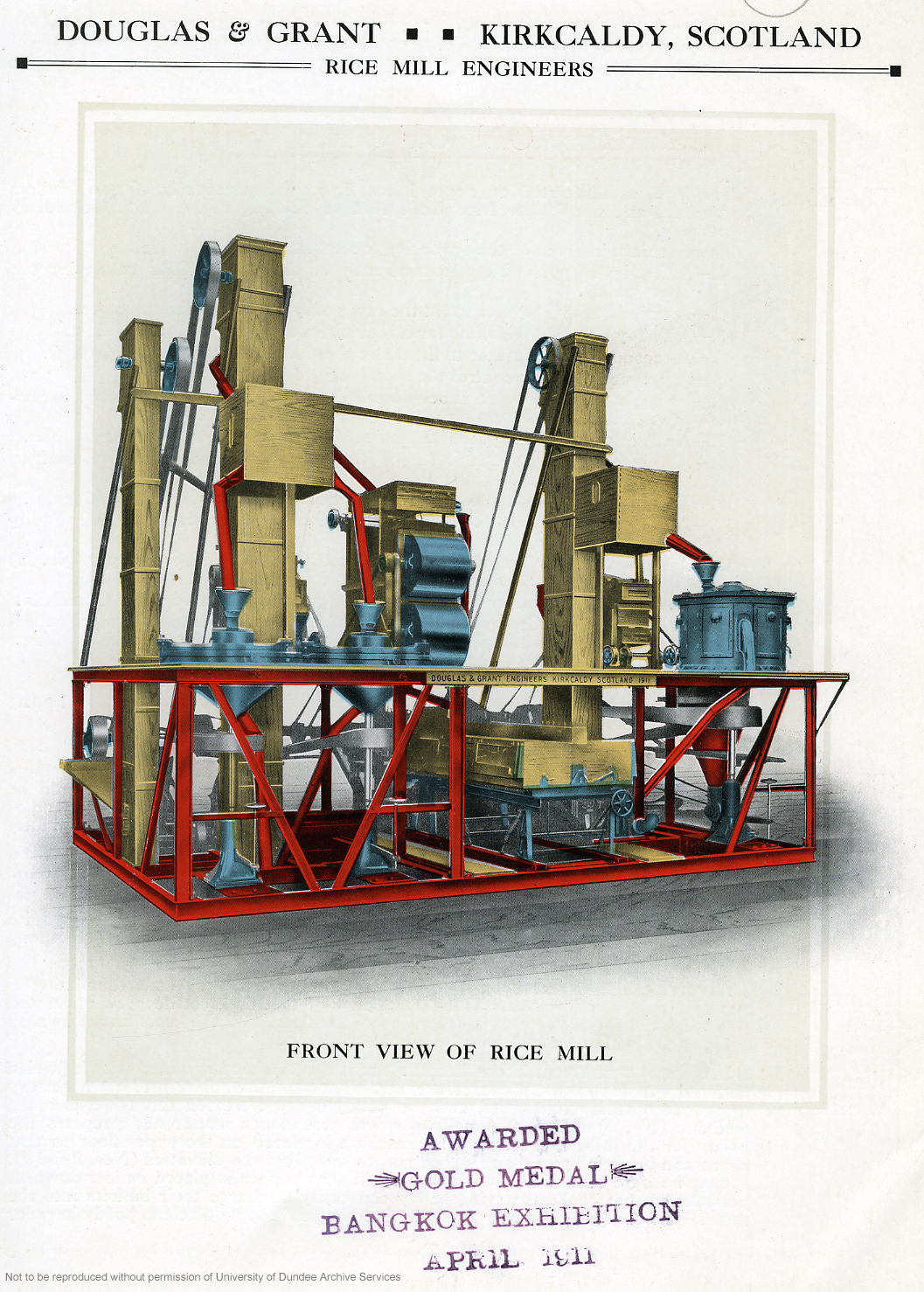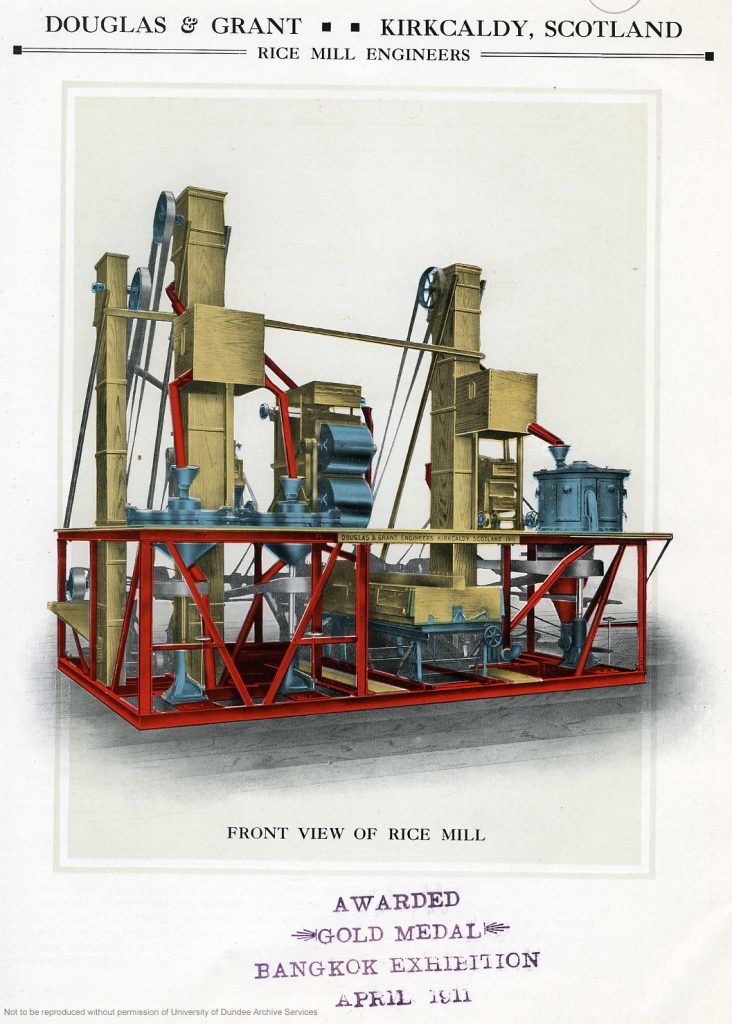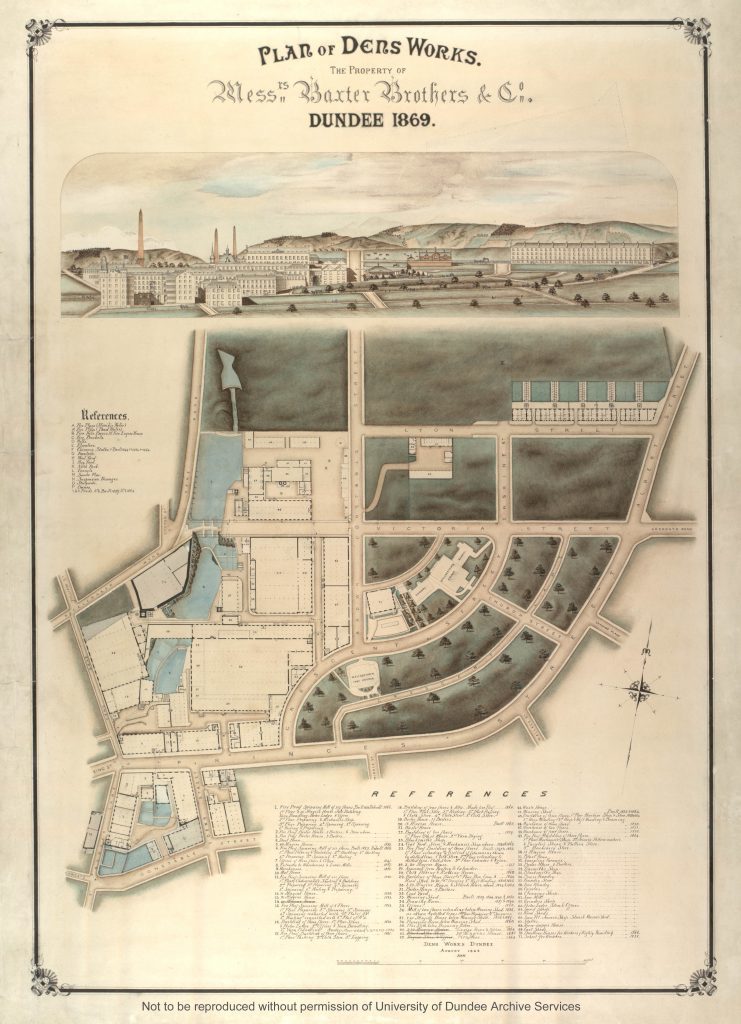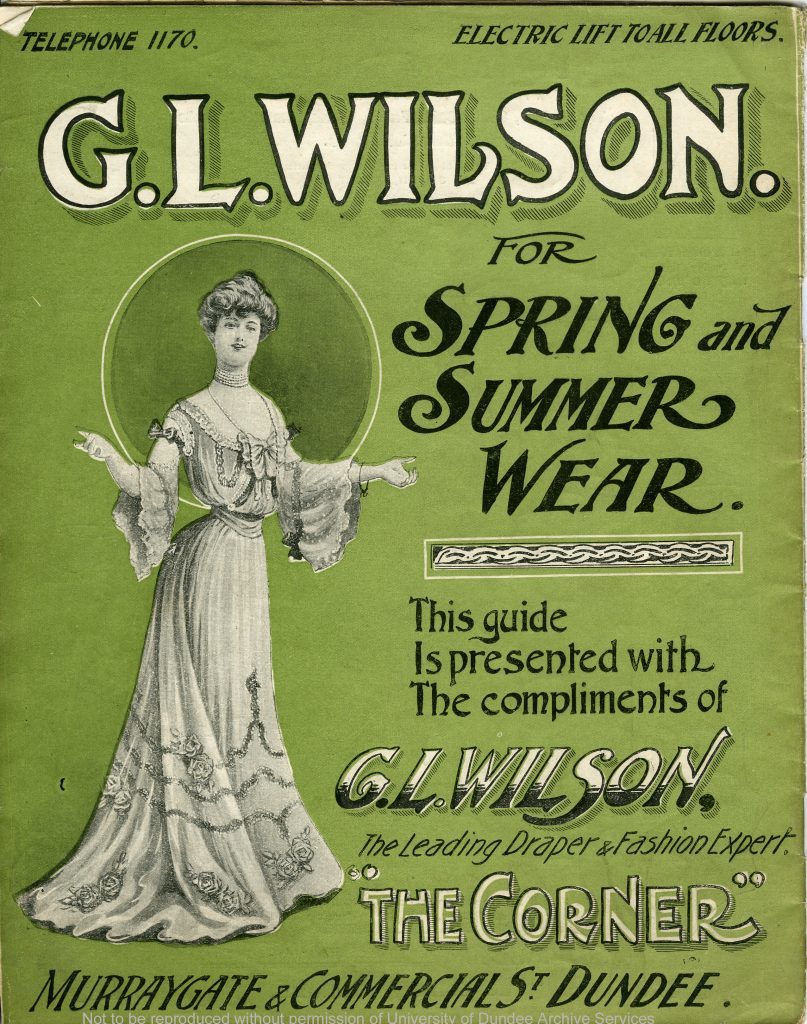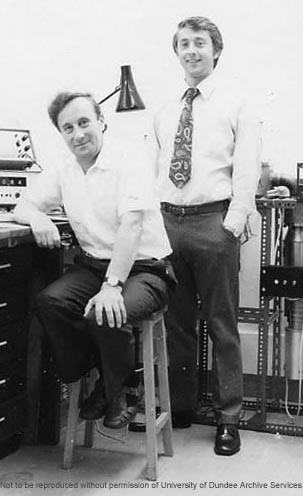Design is inherent in all aspects of our lives. It has the power to transform how we live and think, even if its impact is not always obvious. Our cityscapes and homes, industry, jobs and products are all influenced by design.
Collections held and managed by the University of Dundee Archive Services include a vast and varied range of documents, photographs, plans, drawings and audio visual material relating to design in all areas of life. This article gives a flavour of the design related records held in the University Archive.
This striking design for a rice mill forms part of the Lewis C Grant & Co. Ltd collection. Typical of many business collections we hold, it contains papers that depict technical specifications and designs.
Based in Fife, the company was founded by Robert Douglas in the 1830s and by the 1870s the partnership of Douglas and Lewis Grant specialized in the design and manufacture of steam engines. In the early twentieth century the firm diversified into the production of rice-milling machinery for export. This rice mill design was presented at the Second Exhibition of Agriculture & Commerce held in Bangkok, April 1911, winning the Gold Medal. A year later Douglas and Grant expanded their business, establishing branches in Rangoon, Saigon and Tanjore.
High quality machinery design also played an important role in placing Dundee at the forefront of the textile industry and the Archives hold many records relating to these companies, and the jute mills themselves.
This original plan and elevation of Den’s Work, 1869, is part of the Baxter Brothers & Co. collection. Beautifully coloured, this design shows the expansion of the works with sections of the buildings numbered and a table of reference with dates. The design shows the densely packed area of factory buildings cleverly placed in the context of nearby open space and greenery. The plan implies that industrial progress went hand in hand with elegant and spacious design, not a reflection of the reality of nineteenth century Dundee.
The collections hold treasures relating to design of different kinds. G. L. Wilson’s department store was situated on ‘The Corner’ of Commercial Street and Murraygate. Opened in 1894, the store remained in the Wilson family until the doors were closed in 1972. The Wilson archive contains many catalogues which give a fascinating insight into how fashions and trends have changed through the decades. It also includes records which highlight the role this popular retailer played in the city. Additionally, members of the Wilson family have contributed to our Oral History Project, which has captured the memories and voices of those directly involved with this business.
As well as collecting records relating to Dundee a key aim of the Archives is to record the history of the University. To celebrate its 50th anniversary this year we will be highlighting many of the ways the University has transformed lives, often through innovative design in science and the arts. The research carried out by Spear and LeComber at the University in the 1970s has had a direct impact on billions of people. . Walter Spear and Peter LeComber came to Dundee in 1969 and forged a lifelong collaboration until LeComber’s death in 1992. They carried out ground-breaking research into the properties of crystalline solids, liquids and amorphous silicon which led to the development of liquid-crystal display technology used in today’s flat screen televisions, solar panels and mobile devices. Although they did not patent the ground breaking results of their research, the legacy of their work is evident in the advances in technology that have revolutionised the way we live.
This brief snapshot highlights the types of records that relate to design in all its forms; from initial concepts and sketches through to completed designs and finished products.
Sharon Kelly is assistant archivist at Dundee University Archive Services
